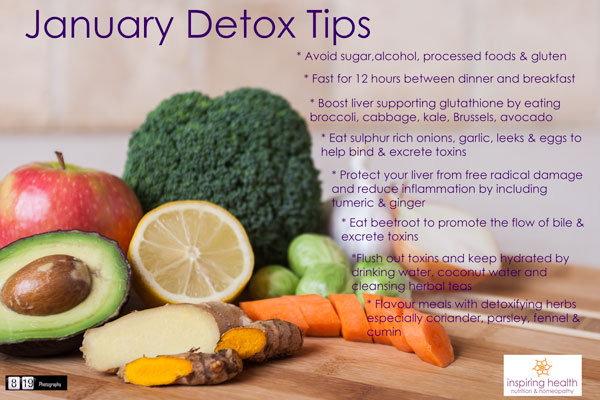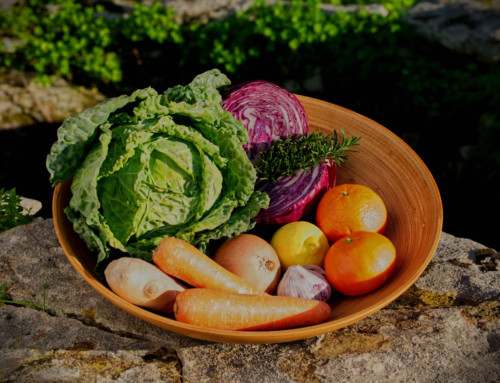 January Detoxification Tips
January Detoxification Tips
If you overindulged over the festive period now is a great time to give your body a well deserved cleanse. Our bodies are equipped with a sophisticated detoxification system which works constantly to help neutralise toxins, mostly without us even realising it. However, this amazing system is put under additional pressure during the festive season we can greatly benefit from January detox.
What sort of toxins do our bodies have to deal with?
- alcohol
- food additives
- prescription and over the counter medication
- impurities in our drinking water
- plastics from water bottles, cling film and food packaging
- Bisphenol A (BPA) in canned foods, thermal receipts, food and drink
- containers
- mercury and PCB’s in fish and amalgam fillings
- pesticides, insecticides, fungicides sprayed onto food
- environmental toxins in the air
- toxins generated from unhealthy bowel flora
- hormones such as oestrogen which need to neutralised and recycled after use
How can help our bodies with the immense role of detoxification?
Our liver has two different stages of detoxification, both of which require nutrients from our diet including B vitamins, Vitamin C, magnesium, amino acids from protein and phytonutrients. As a result of phase 1 detoxification some free radicals are generated. This is a natural part of the process but if they are not dealt they can lead to cell damage and inflammation. One of the best ways to mop up free radicals is by including antioxidant rich phytonutrients by eating a wide range of different coloured vegetables, fruit, herbs and spices.
During phase 2 detoxification the toxin is linked to a substance so that it can be transported through the body and excreted, a bit like a bouncer escorting a trouble maker from a nightclub. These “bouncers” including methionie, glutathione and sulphur come from nutrients within our diet but if we aren’t eating enough of them the toxins will be allowed to run riot in our bodies.
Top January Detoxification Tips:
Avoid alcohol, sugar, processed foods and gluten – these place pressure on our liver and digestive system, disrupt blood sugar levels, weaken our immune system and deplete crucial nutrients such as magnesium, B vitamins and zinc. I have written separately on gluten – my article is available under published works on my website.
Fast overnight between dinner and breakfast – detoxification is postponed whilst we are eating and digesting food. The signal to start detoxification occurs about 8 hours after our last meal and takes at least 4 hours to function well so leaving 12 hours between your last evening meal/snack and breakfast gives your body a chance to detoxify properly. Fasting overnight also gives our digestive system a much needed break.
Note: If you are diabetic or suffer from blood sugar imbalances this may not be appropriate for you.
Boost glutathione and transport toxins out of your body by eating broccoli, cabbage, kale, Brussels, Bok Choy, watercress, rocket,
Eat sulphur rich eggs, onions, leeks and garlic to support phase II detoxification.
Eat fish to supply methionine to bind and escort toxins out of your body. However, avoid fish with high levels of PCB’s. A shopping card is available to download here:
Eat beetroot to help promote the flow of bile, helping to remove toxins from the body. Beetroot is also beneficial if you have overindulged in fatty, rich foods as bile is needed to emulsify fat.
Flavour meals with herbs and spices including anise, caraway, celery seed, coriander, cumin, dill, fennel, parsley and mint. These herbs and spices support glutathione transferase enzymes which are an essential part of phase II detoxification.
Protect your liver from free radical damage, reduce inflammation and enhance digestion with ginger and tumeric. These are great added to warming curries and soups.
Choose organic food where possible to avoid your exposure to toxic pesticides, fungicides and insecticides. Many supermarkets now sell a range of organic produce and sometimes they are not that much more expensive.
The Environmental Working Group (EWG) found that the “dirty dozen” for 2014 are apples, strawberries, grapes, celery, peaches, spinach, sweet bell peppers, imported nectarines, cucumbers, cherry tomatoes, imported snap peas and potatoes. These are the fruit and vegetables with multiple and high levels of pesticides.
The EWG found that the fruit and vegetables with lower pesticide residues are avocados, sweet corn, pineapples, cabbage, frozen sweet peas, onions, asparagus, mangoes, papayas, kiwis, aubergine, grapefruit, cantaloupe, cauliflower and sweet potatoes.
Stay hydrated to help flush toxins out of the body by drinking plenty of water, coconut water and cleansing herbal teas especially dandelion, nettle, burdock. Green tea is also excellent as its powerful antioxidants help to mop up free radical damage.
Replace plastic water bottles with an eco flask such as Klean Kanteen.
Exercise to stimulate your lymph and blood circulation helping to remove toxins from all your cells. Toxins are also excreted from the body when we sweat. Ideally find exercise that you enjoy for the added emotional high.
Meditate or do guided visualisation to give your mind and spirit a detox. I personally like track 1 of Brian Weiss Mirrors of Time visualisation CD but there are lots to choose from or take up a class.
Switch to natural non toxic skincare and cosmetics. My favourites are Neals’ Yard and Green People. Not only are these products natural and eco friendly but they smell gorgeous and their effects are far superior to the toxic products that I used years ago.
Relax in a Epsom salt bath – the magnesium and sulphate in Epsom salts can be absorbed through the skin helping to stimulate the excretion of toxins whilst also leaving you feeling relaxed. Add a mug full of Epsom salts to a hot bath and have a good soak for 20 minutes. Ideally shower afterwards to wash away the toxins.
Note: very hot baths are not recommended if you suffer from high blood pressure.
This blog is for information and it not intended to replace medical care.
Further information and references:
EWG’s Shoppers Guide
Biochemical Imbalances in Disease by Lorraine Nicolle and Ann Woodriff Beirne


